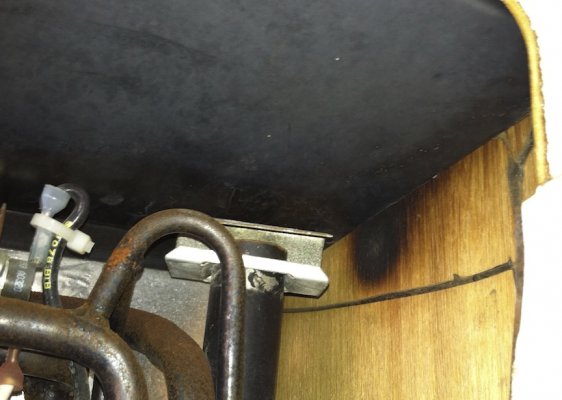TurtleKent
Active member
Here's the Norcold 'Almost' Fire I discovered in my previous 2004 Itasca Horizon. Since I posted the photo on an active Norcold thread on iRV2, I thought I should include it here as well. My Norcold 1201 was installed in the slide(two side vents) apparently installed with baffling as specified by Norcold. I don't see whether it was a side vent or top vent would have changed the scorching of the plywood. The stack was 2" from the plywood. Unknown when the 'Almost' fire occurred. Do you suppose Winnebago treats their lauan plywood with a flame retardant??

